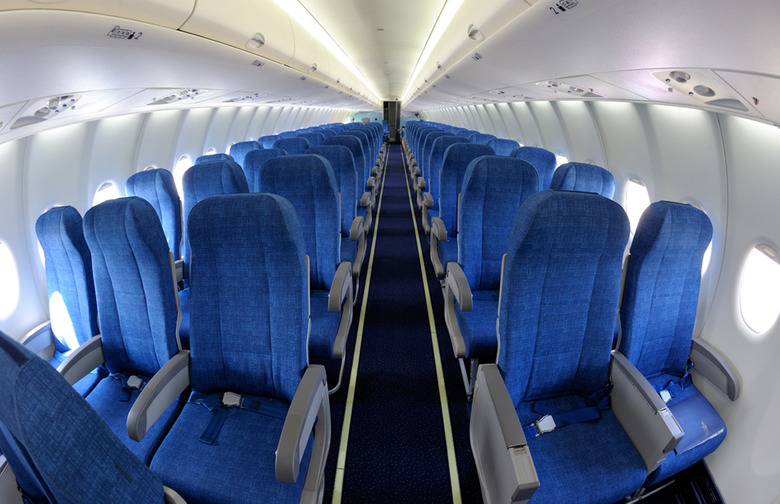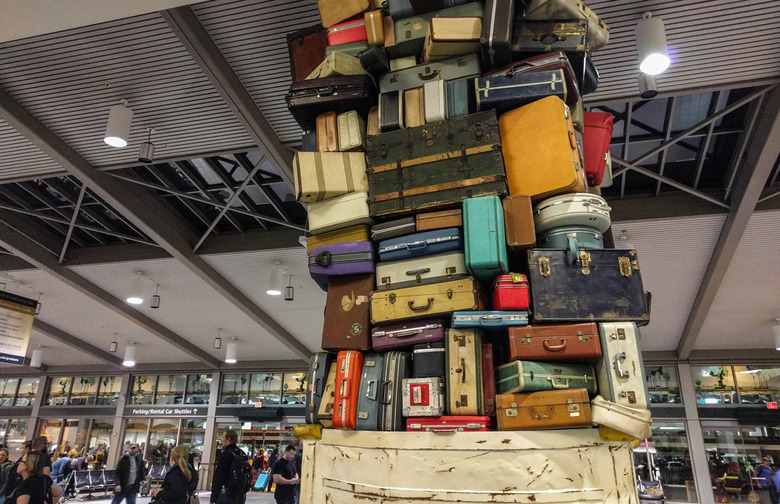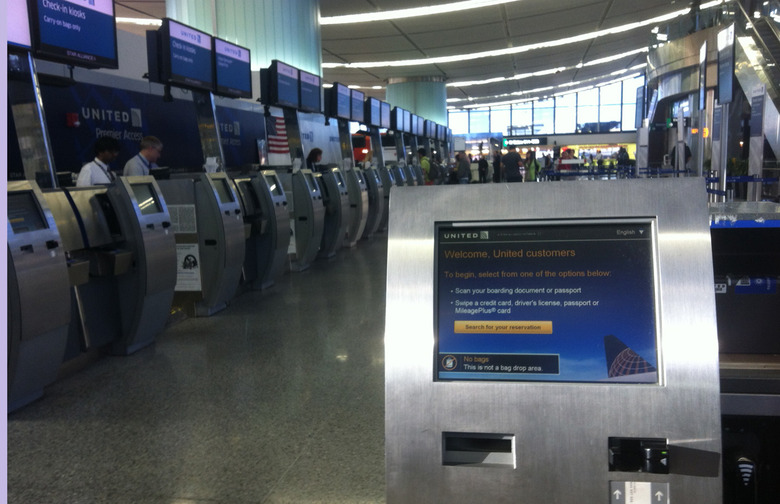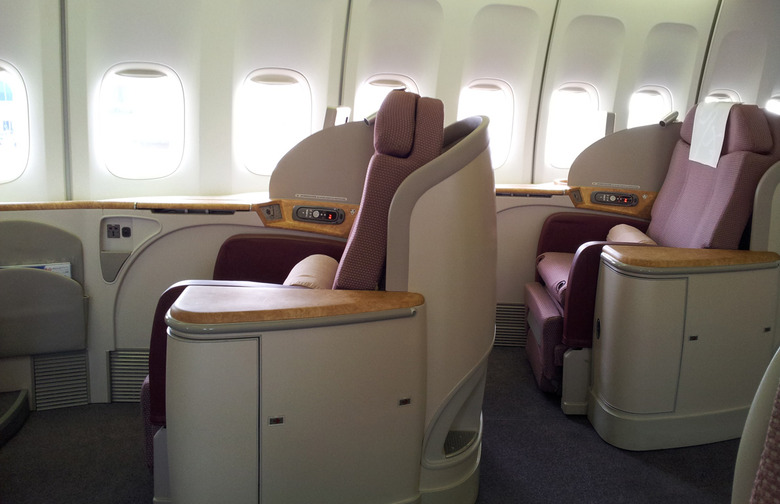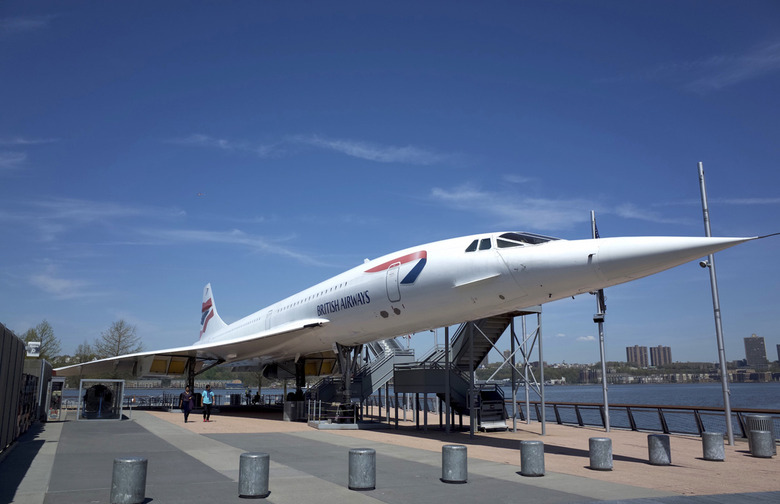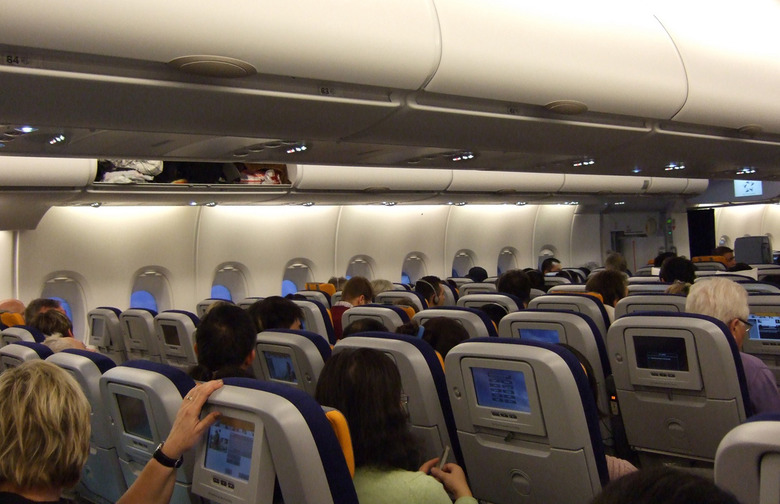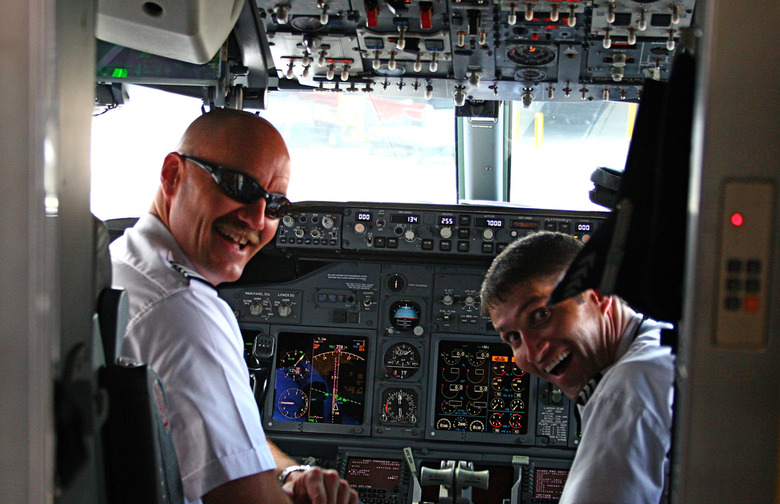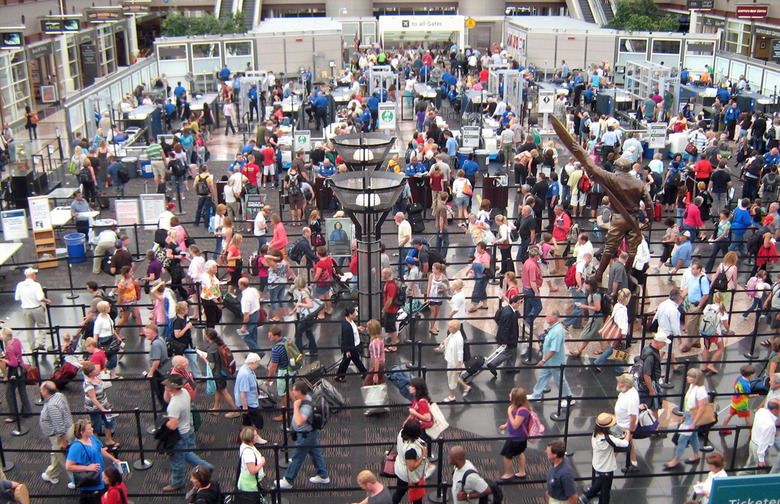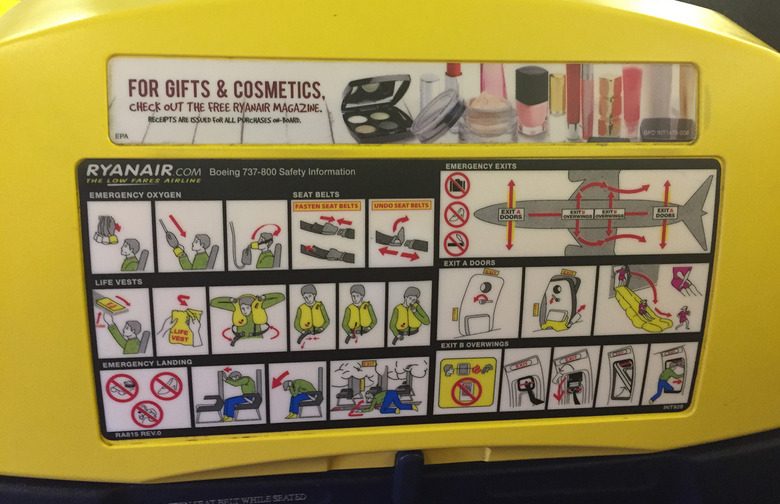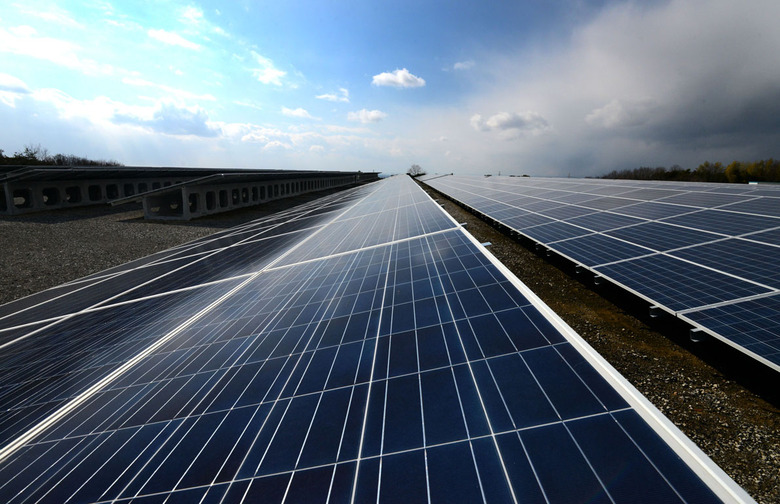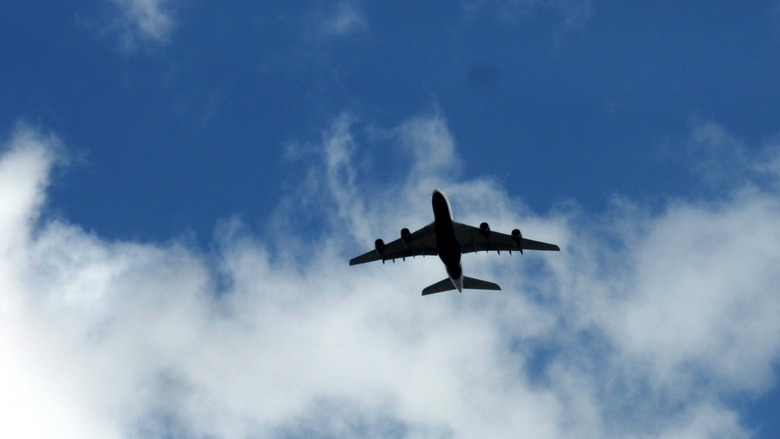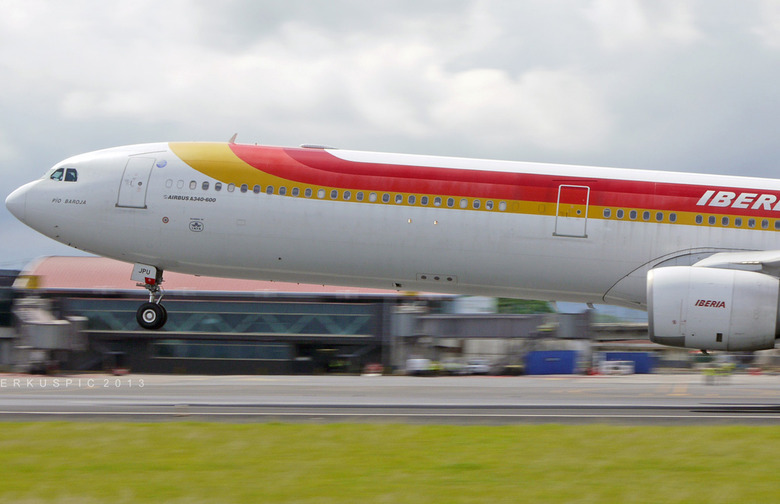12 Impressive Features Airlines And Their Planes Will Have In The Future (Slideshow)
How did this take so long? One of the biggest gripes in regard to seats on planes is struggling for dominance of the armrest — something constantly faced in movie theaters before cinemas wised up and starting introducing seats with their own sets of armrests. A similar idea is being floated for planes, but instead of the movie theater idea (which would require planes to be wider or less seats to be installed width-wise), armrests and seats could be placed at two slightly different levels, so airlines and their passengers could utilize the same amount of horizontal space.
Better Bag Tracking
With fees for checked baggage, travelers are opting to carry their bags onboard now more than ever before. But even those who don't mind an additional charge are still declining to check their bags for fear that the airline will lose them along the way. However, a new international regulation now requires the tracking of baggage during any change in custody, which means airlines are reexamining their entire baggage-checking process. Possible features include utilizing permanently-affixed RFID (radio-frequency identification) tags, the use of temporary or permanent GPS devices, or apps that allow passengers to check and track their bags from their smartphones. Thanks to these efforts, customers should not only expect their lost bags to be located and returned to them faster, but also less items going missing in the first place.
Biometric Kiosks
Although most of these features pertain to things you'll experience after boarding the actual plane, a recent study found that just getting to this point was seen as the worst part of air travel for most passengers. With that in mind, biometric kiosks are now being tested in a couple airports (including Kingston and Montego Bay in Jamaica and Ben-Gurion in Israel) as well as at border crossings. These processes involve using facial photographs, iris images, and/or fingerprint scans to replace — or in conjunction with — passport scanners, in order to approve and track international travelers, which should increase both the speed and accuracy of security checks.
Changing Seats
Little details may have changed in regard to seating, yet we still pile onto planes to sit in little boxes with no leg room flight after flight, with the only real benefits coming to those who sit in first class and business class. However, the seating changes will eventually be much more substantial and more widespread among the different classes. Some of the current ideas include Paperclip Design Limited's "Butterfly seat," which can easily change an economy seat into a business one before you board, and offers the airline more flexibility in regard to the number of seats in each class. In addition to seats than can be altered based on passengers' budgets, Airbus is also developing one that can adapt to different body types and sizes, offering comfort that is custom-fit to each individual.
Faster Flights
In the end, the best advances in plane travel are the ones that make the whole experience quicker. Although the supersonic Concorde is a thing of the past (or maybe not!), new planes are being designed that could get passengers to their destinations ever faster. Canadian engineer and inventor Charles Bombardier recently discussed a jet that could take travelers from New York to London in about 30 minutes. Called the Skreemr (an off-putting name, to say the least), this new plane has a design that would include four wings and two rear rockets, and it would take off using either a magnetic railgun or electric launching system. The "scramjet" engine would then propel the plane and its 75 passengers up to Mach 10, or 7,673 mph — five times faster than the Concorde. Hold onto your hats!
Holographic Gaming Displays
According to Airbus, in-flight entertainment could advance to a point we never could have possibly imagined in the past. Instead of simply having TV and gaming options at your seat, flights could contain an "interactive zone" with physically active, holographic games. This means passengers playing virtual golf, for instance, can actually stand and swing in an open area within the plane. It was noted that this interactive zone could also include a fully-stocked bar.
Pilotless Planes
Hearing "this is your captain speaking" could become a thing of the past. With unmanned aircraft and drones now a reality, the same idea and technology could also be introduced to commercial aircraft, and researchers in Australia claim it could happen within the next 50 years. Of course, we'll probably see driverless trains and cars first, but many in the airline industry believe it's only a matter of time until planes join the party.
Click here for 20 celebrities who can pilot their own planes.
Pre-Screening
You've probably noticed that some lucky (and experienced) travelers get to hit the express line at security checkpoints, thanks to TSA Pre, and you'll probably notice this increasing even more soon — and get to do it yourself, if you haven't already. Airports and airlines alike are getting onboard and more comfortable with (and thus more skilled at) pre-screening passengers before they even arrive at the airport. Giving away information this early in the travel process is a turn-off to some flyers, but it might be worth it to bypass or eliminate the long lines and hassle at the metal detectors.
Safer Crashes
It might sound like an oxymoron, but safer crashes are absolutely a goal in the airline industry. Think about it: Just a few decades ago, the crashing of a commercial airline meant total devastation, but now with a combination of lighter, stronger aircraft and more-skilled pilots using improved flying technology, the odds of surviving a plane crash are improving all the time. (The odds of avoiding an accident altogether are thankfully increasing as well.) One of the most interesting features currently being discussed and developed involves wings that would break into smaller pieces and separate from the fuselage during crash landings to help reduce damage to the passenger sections. Another idea involves the entire cabin section detaching from the rest of the plane and safely landing using built-in parachutes.
Solar Travel
As we speak, pilots Bertrand Piccard and André Borschberg are attempting, in multiple legs, to circumnavigate the globe in an entirely solar-powered aircraft for the first time. They've already made it from Abu Dhabi to Japan to Hawaii to California, but the trip was not without its hang-ups. Still, the results are encouraging, and if the technology eventually reaches commercial airlines, it means flying will be cleaner and cheaper (due to lower operational costs) than ever before.
Transparency
We're not talking about transparency in relation to information here, but instead transparency of the plane itself. Like Wonder Woman's invisible plane, aircraft of the future may include see-through upper deck fuselages, meaning the entire walls and ceilings will just be windows. Afraid of the views or suffering from vertigo? Airbus, who introduced the transparent plane idea, said nervous travelers can opt to turn their seats into holographic pods, making their personal seating area opaque. According to Airbus, these dreams could become a reality by 2050. Interestingly, the exact opposite idea — windowless flights where the walls are also TV and computer screens — is also being explored.
Vertical Takeoffs and Landings
As much as the idea of taking off vertically seems far-fetched, it's also kind of surprising we haven't attempted it sooner, considering this is how both rockets, helicopters, and Harrier Jump Jets gain elevation. The leading design for commercial airplanes is the AWWA Sky Whale (it really does resemble a whale), which would be equipped with four Harrier-style engines and could hold up to 755 passengers seated in three different decks. This technology would eliminate the need for long runways and time-consuming takeoffs and landings, and would allow the plane to make emergency landings just about anywhere.
